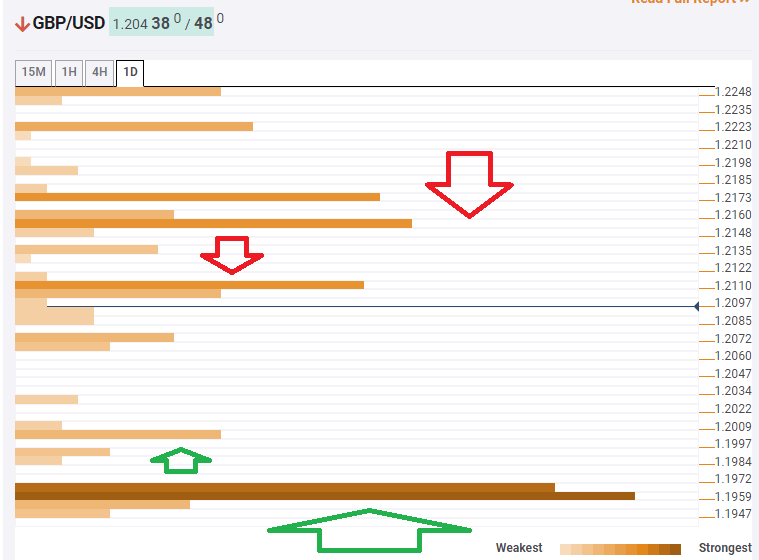GBP/USD downside target is 1.1958 as the pressure continues— Confluence Detector
GBP/USD is succumbing to US dollar pressure amid the coronavirus crisis. After escaping 1.20 on Tuesday, will it fall further?
The Technical Confluences Indicator is showing that pound/dollar has weak support at 1.2003, which is where Tuesday's trough converges with the Bollinger Band 4h-Lower.
Significant support awaits only at 1.1959, which is a cluster including the Pivot Point one-week Support 1, the previous yearly low, and the PP one-day S1.
Resistance awaits at 1.2110, which is the confluence of the Simple Moving Average 10-1h, the Fibonacci 38.2% one-day, the SMA 1001-5m, and the SMA 5-1h.
Further up, 1.2154 is the next hurdle. IT is the meeting point of the PP one-month S3, the BB 1h-Upper, and more.
This is how it looks on the tool:

Confluence Detector
The Confluence Detector finds exciting opportunities using Technical Confluences. The TC is a tool to locate and point out those price levels where there is a congestion of indicators, moving averages, Fibonacci levels, Pivot Points, etc. Knowing where these congestion points are located is very useful for the trader, and can be used as a basis for different strategies.
This tool assigns a certain amount of “weight” to each indicator, and this “weight” can influence adjacents price levels. This means that one price level without any indicator or moving average but under the influence of two “strongly weighted” levels accumulate more resistance than their neighbors. In these cases, the tool signals resistance in apparently empty areas.
Learn more about Technical Confluence
